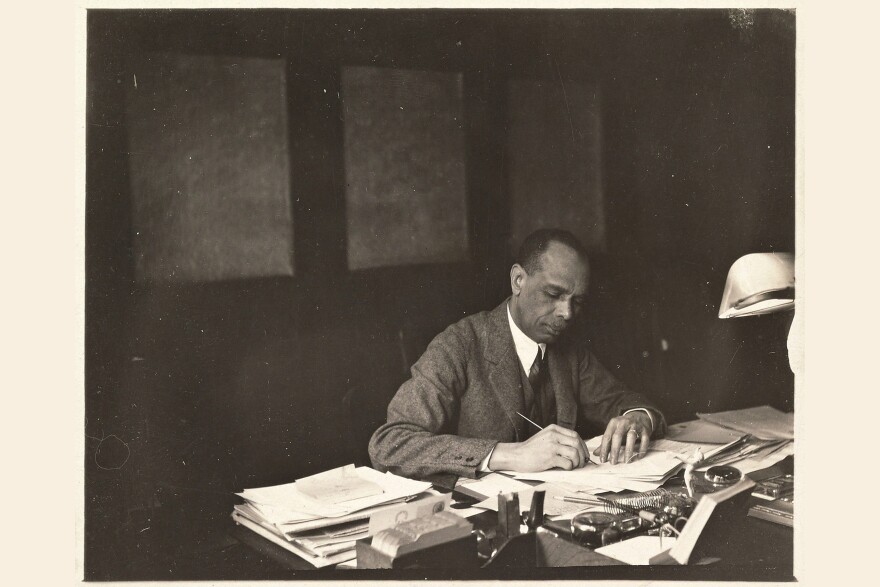One of the most celebrated pieces of American music has a strong Connecticut connection.
"Lift Ev'ry Voice and Sing," also known as the Black National Anthem, was adopted by the NAACP and prominently used as a rallying cry during the Civil Rights Movement of the 1950s and 1960s. This year, the song was performed at the Super Bowl by Waterbury native Sheryl Lee Ralph, an actress on “Abbott Elementary.”
That’s not the song’s only tie to Connecticut.
The words to “Lift Ev’ry Voice and Sing” were written by James Weldon Johnson in 1900 for a community celebration in Jacksonville, Florida, to commemorate Abraham Lincoln’s birthday. Johnson’s brother, J. Rosamond, set it to music.
Much like the Gershwin brothers, the Johnson brothers would later make a name for themselves in vaudeville and on Broadway with a string of hit songs. One of them, “Under the Bamboo Tree,” was sung by Judy Garland in the 1944 movie musical “Meet Me in St. Louis.”
Johnson would go on to a distinguished career as a lawyer, professor, diplomat and civil rights activist.
After Johnson died in a car accident while on vacation in Maine in 1938, writer Carl Van Vechten was looking for a way to memorialize his friend. A chance encounter with the head librarian at Yale University, Bernhard Knollenberg, convinced Van Vechten to create a collection of African-American materials at Yale and name it after Johnson.
In 1941, Van Vechten, who was white, donated his own collection of materials, and started encouraging Black people across the country to donate to the collection.
“Van Vechten published articles in Opportunity magazine, and The Crisis, the magazine of the NAACP,” said Melissa Barton, a curator at Yale’s Beinecke Rare Book and Manuscript Library. “He was advertising the founding of the collection and inviting people to donate anything they might have relating to African-American culture to the collection.”
Contributions began steadily trickling in, especially newspaper clippings, Barton said.
“They were collecting newspaper clippings and ephemera from theatrical programs and concert performances, and sending them in little packages,” Barton said. “The librarians at Yale were preserving this stuff, in many cases gluing newspaper clippings to cotton paper so they wouldn’t crumble.”
Van Vechten managed to convince Johnson's widow, Grace Nail Johnson, to donate her husband’s papers in 1946, and soon after many prominent figures donated their papers, as well.
“So in the first 10 years of the collection, they received donations from Paul Robeson and Eslanda Robeson, Langston Hughes, Aaron Douglas, many, many prominent figures of the period we usually now call the ‘Harlem Renaissance,’” Barton said.
The collection is immense — over 13,000 volumes, 15,000 images and countless letters, manuscripts and other ephemera from the likes of W.E.B. Du Bois, Langston Hughes, Countee Cullen, Zora Neale Hurston and Richard Wright. Barton said it is one of the most consulted collections in the Yale Library.
Much of the collection has been digitized and can be viewed at library.yale.edu.






